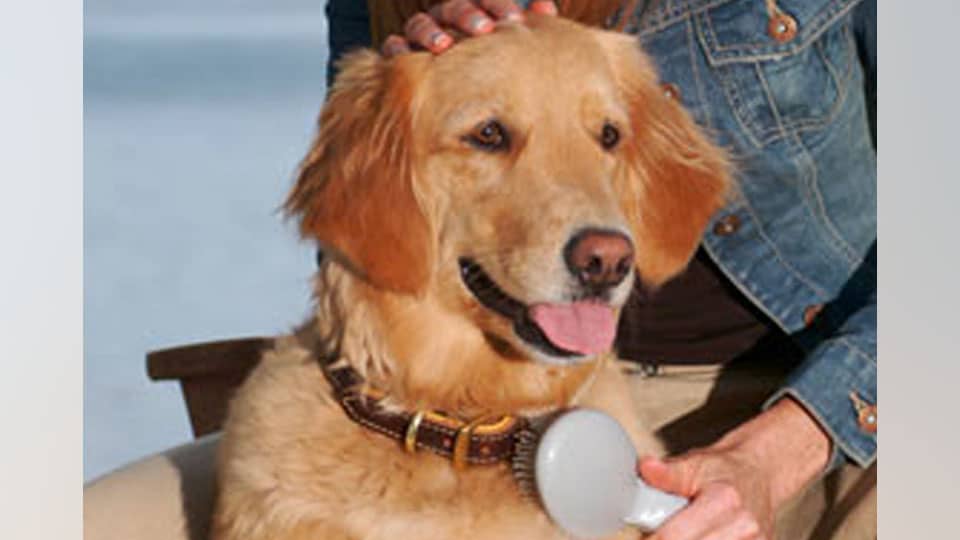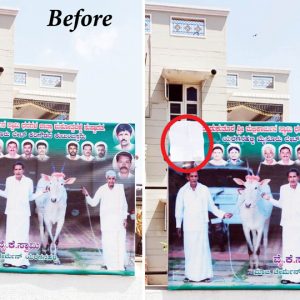By Maneka Gandhi
In this week’s Pet Talk, Maneka gives information on grooming supplies to be kept at home for dog.
What grooming supplies could I keep at home for my dog?
- Dogs’ Brushes and Combs: Dogs can have so many hair types, so it’s no surprise that there are so many types of dog brushes available. Choose a brush or comb that best suits your dog’s hair. Your dog may benefit from more than one type of brush or comb; • Nail trimmers: Nail trimmers can be stressful for dogs and owners alike. Do not get a trimmer till you learn how to trim; • Dog Shampoos: Always choose a shampoo that is intended for use on dogs; • Dog Ear Care: Proper ear care for dogs is often overlooked, but it is just as important as maintenance of hair and nails. Talk to a veterinary professional or groomer about proper techniques before you begin [Note: NEVER use cotton-tipped swabs or alcohol in your dog’s ears!] • Dog Hair Clippers: Not all dogs will need haircuts. Short-haired dogs do not need to be shaved or clipped. Some dogs with medium hair, such as Golden Retrievers, may benefit from occasional “shave-downs.” However, dogs with hair that keeps growing, like Poodles or Shih Tzus, must be cut on a regular basis. Dog groomers and pet owners often use electric clippers to give dogs a neat and uniform cut.
How to treat your cat’s swollen paw?
Do NOT attempt to medicate your pet without first being examined by your veterinarian. Cats are very sensitive to painkillers, like aspirin, which can be fatal. Never give any over-the-counter, or unused, portions of prescriptions to your pet without consulting your veterinarian first.
Examine your cat’s paw closely for visible signs of trauma and check for anything that might be wrapped tightly around a foot or tow, such as string or plastic, and remove it to restore circulation.
If you notice a discharge, or feel the paw is warm to the touch, which are signs of infection, that likely will require prescription antibiotic treatment. If you can, safely remove small objects such as pebbles or thorns, wash the paw and apply a topical antibiotic ointment. If swelling persists, or an object is deeply embedded, seek a vet’s attention.
Swelling can be a sign your cat was stung by an insect, or bitten by a rodent, or other small animal. This can trigger a potential allergic reaction, or lead to infection. Your cat also may have come in contact with a toxic substance, such as a chemical or cleaning product, that irritated her sensitive foot pads. If you think this is the case, gently wash the foot pad. If your cat shows signs of allergic shock, such as vomiting, loss of bowel and bladder control, or respiratory distress, seek medical help right away.
While regular scratching keeps most cat nails at a suitable length, overgrown cat claws can puncture paw pads and lead to swelling. Puncture wounds can be prone to infection, so veterinary attention is advised. Overgrown claws also can be a sign of a chronic disease, so if this is a regular occurrence for your cat, talk to your vet about potential causes and treatment options.
How should I monitor my caged bird’s droppings?
Your bird likely consumes many various types of fresh fruits and vegetables, a multitude of different seeds, and a variety of multi-coloured pellets if you supplement your bird’s meals. The food dyes in these pellets, combined with the natural colours of the fresh foods your bird eats, will naturally produce a rainbow of colours in their droppings. However, if you notice that your bird’s faeces is abnormally yellowish or tarry-black, it can be a sign of severe health problems that need prompt veterinary attention. Always check the droppings, when cleaning your bird’s cage, to look for these red-flags. The dropping should be neither too wet nor too dry. A good rule of thumb is that it should be the consistency of toothpaste. Droppings that are very dark, or seem “tarry”, can be a sign of internal bleeding, which requires immediate veterinary care. In general, your bird’s droppings should produce little to no odour. Faeces that seems overly smelly can be indicative of infection, intestinal problems, or other types of illness. The urine in bird droppings normally presents itself as a white coloured, pasty liquid, and usually comprises around 30 to 50 percent of the volume of the droppings. While this can vary slightly, you should definitely report to your veterinarian if you fear that there is too much, or too little, liquid in your bird’s waste.
Why are my pet parrot’s feathers falling out?
A nutritional deficiency can stress a bird to the point of plucking and other self mutilation. Add fresh fruits and vegetables on a daily basis. Parrots are highly intelligent and social creatures. They crave interaction with their flock members, and will sometimes pluck if they feel neglected. Evaluate the quality time that you spend with your pet and make sure that you are providing your bird with enough socialisation, interaction, and play. If you find that any area of your bird’s environment isn’t as wonderful as it should be, take immediate action to make your bird more comfortable. Once a bird starts plucking its feathers, it can be difficult to get it to stop if the condition has been allowed to go on for a time. Make sure your pet’s plumage stays intact by being the most caring and attentive bird owner that you can be.
How to ensure my bird is getting enough sleep?
Pet birds need 10 to 12 hours of uninterrupted sleep a night. A bird that has a quiet, safe and dark environment for this amount of time should be getting enough sleep if it is in a distraction free area. A bird, unlike a small child, is a very light sleeper though, so it is important to insure that the area is distraction free. Your bird is disturbed by noise, light, and movement.
- Family late at night and early morning
- TV on late
- Cage by a window where light comes in
- LED lights
- Other pets.








Recent Comments